#bethnal green library
Text
The Little Wartime Library by Kate Thompson
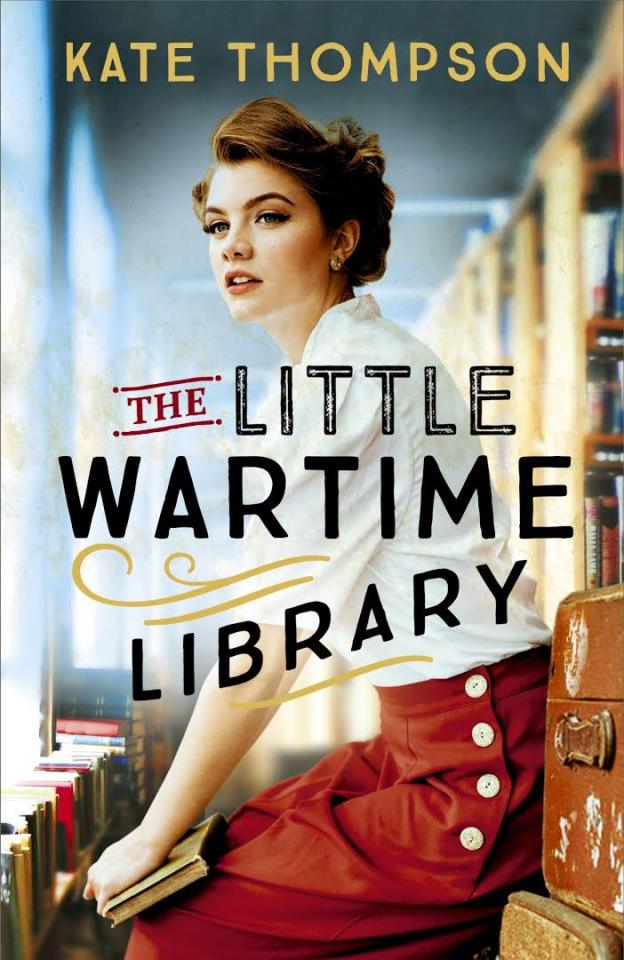
Read time: 4 Days
Rating: 4/5
The quote: Libraries are places that seem to invite confidences. all those books whispering from shelves, loosening tongues. Perhaps it was true. When you are surrounded by stories, maybe you can't help but share your own? — Ruby Munroe
**Disclaimer if you've never read one of my reviews before I am a librarian, give me respectful treatment of librarians and I will adore you. Consider this a bias warning.**
The Little Wartime Library has two protagonists, Clara Button and Ruby Munroe. Clara is a widow, a war widow. Her husband Duncan died at Dunkirk four years previously. More than a widow at the start of the blitz Clara got caught up in an explosion while working at the library and lost her baby. The last part of Duncan. Even four years later both her mother, Henrieta and Duncan's mother, Maureen resent her work. She is basically alone in the world now. Except for her best friend Ruby. Ruby is almost Clara's opposite. Whereas Clara is a widow, Ruby is a bachelorette with no interest in marriage, not that that has stopped her from engaging in the company of men. She puts off a shameless and flirtatious attitude, calling herself Bethnal Green's answer to Betty Grable. (Ruby, p.294) and getting called Ruby Red Lips after her trademark bright red lipstick. Ruby is dealing with her own internal guilt over the death of her older sister and the abuse her mother, Netty faces near-daily. Clara and Ruby have an enviable near sister-like relationship total loyalty, teasing and brutal, honest communication.
There is a lot of women supporting women and women getting s**t done as you would expect from a book set in WWII on the homefront. But so little of this book is truly about romantic relationships, even though they definitely exist. It is more about female empowerment, an attempt to solidify positions in the workforce, a place in the world after the men come home and reclaim their roles. The support cast is fairly well balanced for a novel in WWII with a male support cast including love interests Billy Clark and Eddie O'Riley, nearest to an antagonist, Mr Pinkerton-Smythe and library regular/ assistant Mr Pepper. The others are all women or children including, Beatty and Maria Kolsky, Sparrow, Mrs Chumley, Netty Munroe and a sizable and saucy book club.
I really like the way Clara and Ruby's stories are left at the end with hope, happiness and brightness in their futures. Nearly all the main support characters get some form of optimistic ending, this is appreciated from a book that could easily have gone down a much darker path if Thompson so desired. Netty's shows healing. Mrs Chumbley is given her rightful position of power at the heart of the community. Disappointingly Mr Pepper has no defined end. Ruby gets to become the immensely successful bodice ripper author as she promises the book club when they start reading Forever Amber who has it all. Clara gets her little family and her career. Wild child Sparrow's ending is fun and playful, honouring the trust and faith that Clara placed in him, proving twat face Pinkerton-Smythe so brilliantly wrong. Sparrow like Clara has sweeping character growth, his coming from maturity and hers from coming into her own. They lean on each other, learn from each other and arguably keep each other alive.
The Little Wartime Library has clever framing. In theory, it is a story being told by an old woman in the present (2020) to her daughters. She has maintained the typical don't talk about the war or childhood so her daughters, Rosemary and Miranda, don't know the full truth of her past, the extraordinary things she saw. It comes to pass that this is one of the Jersey girls, Beatty. This framing device is only used in the prologue and epilogue, it is useful for bringing the past and present together. A reminder of the consistency and importance of libraries to people. I like the writing style Thompson has chosen to use for her book. The perspective alternates between Clara and Ruby. As the story unwinds we see they both have their own joys, their own flaws and their own ghosts. Though there is possibly a little more focus on Clara's story, Ruby being the badass bestie that she is. Ruby and Clara have different voices Clara is more reserved but showing passion when something truly matters to her, Ruby is more of a femme fatal she is a fallen woman but that hides deep pain her voice combines the two aspects of her personality. Each chapter has not only a number assigned but a narrator and a quote (more on those later). Thompson has provided some natural breaks, like part breaks but not signposted these are where there are sizable time jumps. Skips sometimes last days, weeks or months and are usually indicated only by the earliest lines in the chapter and the dramatic closing moments of the previous. There are some (fictional) newspaper articles as a way to provide information. It is a smart choice. The information imparted by these articles wouldn't feel natural if revealed in conversation, it would feel too much like exposition.
There are some clever echoes in the events in the lives of the protagonists, Clara and Ruby. Both the good and the bad. They are both haunted by very different events. All a reader wants from Kate Thompson is to give us their happiness. But first the truths, the information, the secrets they are hiding from their men and the readers. Beatty and Maria, known as the Jersey girls, broke my heart, they are written in a way that makes you feel pain, makes you want to help them and give them a hug. The men, Billy and Eddie, are so different but so perfect for their women. The hoop-jumping, the perseverance, the dedication and the tropes used.
I can't formulate this review better so have a collection of thoughts and quotes.
There are many articles around on the bombing of the Hughes Mansions. This was the last bombing by the Nazis on London. It was a V2 bombing on 27 March 1945 targeting the heart of the Jewish community in London. I quite like one written by Lianne Kolirin in 2020 interviewing survivor Millie Henderson. The bombing of Hughes Mansions is included as a plot point and included well, with Clara using her people skills to her highest advantage.
The description of V-Day takes up only a single page. In context, it is a perfect choice and it is so well written.
I used a different coloured book flag for important sections on Clara and motherhood/ pregnancy, including a despicable but arguably period and societal status appropriate moment with Clara, Henrietta and Maureen. It is an interesting thing to actually see. Motherhood is important to her and the loss of the baby truly haunts her. I wish there was an equivalent for Ruby.
They say you die twice. One time when you stop breathing and a second time, a bit later on, when somebody says your name for the last time. — (Banksey) Clara says this without the 'They say'. She said it to Beatty and I just really like the quote but the context of the relationship is interesting.
"Libraries are the engines of our education quote and our escape, never have they been more important in transforming our lives." — (Minister Rupert Montague, p.17) Take the attribution of any quote about libraries in this book with a grain of salt for reasons that will become apparent in the next section.
"What are you in the mood for?"
"Errol Flynn and a stiff gin," — (Clara and Dot, p.31) Look I don't know why this made me smile as much as it did. I mean I get it Errol Flynn in his heyday?
"Break the mould, Clara. Make book clubs about sharing a love of reading, not education. Clubs oughtn't be the preserve of the elite." — (Billy, p.51) This is perfect to me, and the reason I prefer reading groups where everyone just shares what they've been reading. I've never seen a book club in my area that wasn't reading literature, classics and tomes.
Clara and Ruby had often discussed women's love for something with a bot of spice in it, and Ruby had noticed, as the war had groaned interminably on, women's appetites for something more risque had increased. By 1944, with so many husbands and boyfriends away for years now, reading was the only way they could explore some of the feelings of loneliness. — (Ruby, p.62-3) This is a fascinating idea that I just hadn't thought of. But I guess it makes sense, especially for those that truly swore themselves to fidelity (there were men available).
Bloody men. If you asked her, most of the wanted their dingle-dangles chopping off. — (Ruby, p.92) What can I say our girl is ruthless. She does an interesting thing with a 972 page book and a *ahem* wanker later.
Ruby started to tidy up and realised that in the midst of this dreadful war, being fought on so many fronts, only their little unconventional library family made any sense at all. — (Ruby, p.171)
"I'm not sure whether I believe in ghosts, but two centuries worth of suffering has to leave a mark." — (Billy, p.185) At this point Billy and Clara are standing in the ruins of Bethnal Green Library, a former asylum. The whole section is haunting and there is talk of some of the 'treatments' that used to be used. There is also a perfect use of graffiti.
It wasn't just slightly spicy, it was the literary equivalent of an incendiary bomb! — (Ruby, p.222) Let me introduce you to Forever Amber. Forever Amber is a 900+ page bodice-ripper published in 1944, set in Restoration England. It was scandalous, it was repeatedly banned in parts of the US and it plays an important role in The Little Wartime Library. Ruby and Clara want to be like Amber, strong, fierce and sassy af.
This is considered based on true events. The Bethnal Green Library did exist in something of the form shown in The Little Wartime Library but the fiction is something of a genderbend on reality. The library was set up and run by librarian George F. Vale and his deputy Stanley Snaith. Thompson is kind enough to provide some of her research material and includes not only a piece of writing on the Bethnal Green Library but the Read for Victory campaign.
There are some serious warnings in play for The Little Wartime Library. Obviously, this is set during WWII so the 1940s, death and a degree of sexism are somewhat expected. Some potential concerns to be aware of are attempted assault, murder (kinda good riddance to bad rubbish), war crimes (more than once), death (so much death), discrimination, domestic abuse, spousal rape, forced pregnancy and suicide. I think that's it. Most of this isn't in the first person but rather happening to the support cast. Though everyone impacts Clara or Ruby in one way or another. Let's be honest you're reading 'based on a true story' fiction set in WWII about a library in a tube station it cannot afford to pull its punches too much.
Let me start this section by including part of Kate Thompson's dedication: "Thank you to all library workers, past and present, whom I spent many an illuminating hour chatting with. Not just bibliophiles, but people-lovers too.". I include this because one of the overwhelming senses I am left with after reading The Little Wartime Library is it feels a bit like a love letter to librarians. The love letter thing is likely quite deliberate there is also a line in the Author's Note: "There's an assumption — an unfair one — that if you work in a library, you are a cardigan-wearing introvert. Bethnal Green Library, where my novel is set, is one hundred years old this year, so I set myself the goal of interviewing one hundred library workers. from post-war librarians, to feminist and activist librarians, school librarians to Britain's oldest library reading volunteer (can we all say hello to the inimitable Nanny Maureen) qualified and unqualified, all share one thing in common, a passionate belief in the power of books and reading to change lives.". These interviews form one of the perfect choices for the book, the quotes at the start of each chapter. These quotes are just absolute gems I really would love to read the whole interviews. Especially that one with Nanny Maureen.
As well as my usual dump of quotes from the book I'm going to add some of my fave of the quotes from librarians.
‘I always felt librarians should try to be encouraging, not judgemental, about reading. What you want to do is give people a great experience. Who are you to judge what that experience is?’ — Alison Wheeler, MBE. Former Chief Executive of Suffolk libraries, library campaigner and trustee of CILIP.
'Librarians require infinite patience and politeness in the face of adversity. A love of people is as, if not more, important than a love books.’ — Charlotte Clark, Manager of Southwold Library
'I'm a gatekeeper to the past, sharing my knowledge of the riches of our books for others to discover. I'm a facilitator of joy.’ — Mareike Doleschal, Librarian at Shakespeare Birthplace Trust in Stratford-upon-Avon
‘Librarians are facilitators, entertainers, empathisers, listeners, educators and friends. Libraries are about more than their buildings.’ — Carol Stamp, President of Libraries Connected and Chief Librarian of Kirklees Council
‘A library is more than its books, it's a place where women's lives have the potential to be transformed’. — Magda Oldziejewska, Funding Coordinator, Feminist Library
‘What we lacked in funds, we made up for with our imagination. Lots of love and a library ticket, that's all you need.’ — Claire Harris, retired children's librarian
‘Quiet in libraries? I don't think so! Anybody can walk in through the doors, and we have to be ready to listen and help.’ — Michelle Russell, Library Manager at Romford Library in the London Borough of Havering
‘As a librarian, people trust you. They let down their barriers. We are a social worker, a listening year, a confidante.’ — Maggie Lusher, Manager of Kesgrave Library in Suffolk
‘There's no such thing as a child who doesn't like reading, just a child who hasn't found the right book.’ — Nicola 'Ninja Librarian' Pollard, school librarian for St John Fisher Catholic High School in Harrogate
‘Libraries and love both take their own time to develop. I met my partner for the first time when we worked together as young librarians just before the new millennium. We didn't come together romantically until nearly twenty years later. we each had a lot of whining, growing, and — yes — reading, to do first.’ — Anne Welsh, Beginning Cataloguing
‘Want to see the world? Don't join the army, become a librarian.’ — Denise Bangs, Idea Store Libraries, Tower Hamlets, East London
‘Time slips by in a library. It's one of the few public social spaces where you can go to feel safe and warm, to escape, explore and enrich your life. In a conspiracy theory age, being able to access trustworthy information makes libraries more relevant than ever.’ — Professor Shelley tower and Dr Sarah Pyke, Living Libraries
I think librarians especially school and public librarians will likely really enjoy this and feel seen. Between Clara and Ruby we are all represented, all of us are to an extent one or the other. Ruby is the glamorous and Clara is closer to the stereotype. That said all readers will still enjoy The Little Wartime Library, there is just a perspective here that is often lacking in fiction. There is so much intelligence, love and sass here but above all respect. This has been my overly long and chaotic review of love for The Little Wartime Library.
#the little wartime library#kate thompson#book review#ktreviews#read 2022#historical fiction#dymocksreadingchallenge#bethnal green library#spoilers on goodreads#booklr
2 notes
·
View notes
Text
The Little Wartime Library by Kate Thompson #NetGalley #ARCReview #BookReview #WorldWarII
If you love #historicalfiction set during #WorldWarII then you won't want to miss #TheLittleWartimeLibrary by #KateThompson when it comes out later this month. Charming, heartbreaking, and full of great characters #netgalley #arcreview #bookreview
London, 1944: Clara Button is no ordinary librarian. While war ravages the city above her, Clara has risked everything she holds dear to turn the Bethnal Green tube station into the country’s only underground library. Down here, a secret community thrives with thousands of bunk beds, a nursery, a café, and a theater—offering shelter, solace, and escape from the bombs that fall upon their…

View On WordPress
#Advanced Reader&039;s Copy#ARC Review#Bethnal Green#Channel Islands#Forever Books#German Bombers#German Rockets#Hodder & Stoughton#Jersey#Kate Thompson#NetGalley#The Blitz#The Little Wartime Library#Underground Library#V2 Rockets#World War II
0 notes
Text
~ The little wartime library ~
Hi! So, the first book I read this year, was The little wartime library by Kate Thompson, I enjoyed this book a lot, so here I leave my review, hope you like it!📚💫
I must say that it's one of those books you can't stop reading until you finish it.
Based on true events, it tells the story of the little underground library in Bethnal Green—a library that, as the book narrates, helped many people escape the harsh reality of World War II.
It not only talks about this small underground library but also introduces its two main characters, two women, Ruby Munroe and Clara Button—best friends with their own individual stories, yet sharing a common passion for the library and all it represents.
Throughout the book, we learn about our protagonists' stories and the situation of women during that time. Despite everything, they forge ahead, supporting each other and facing the adversities of the era.

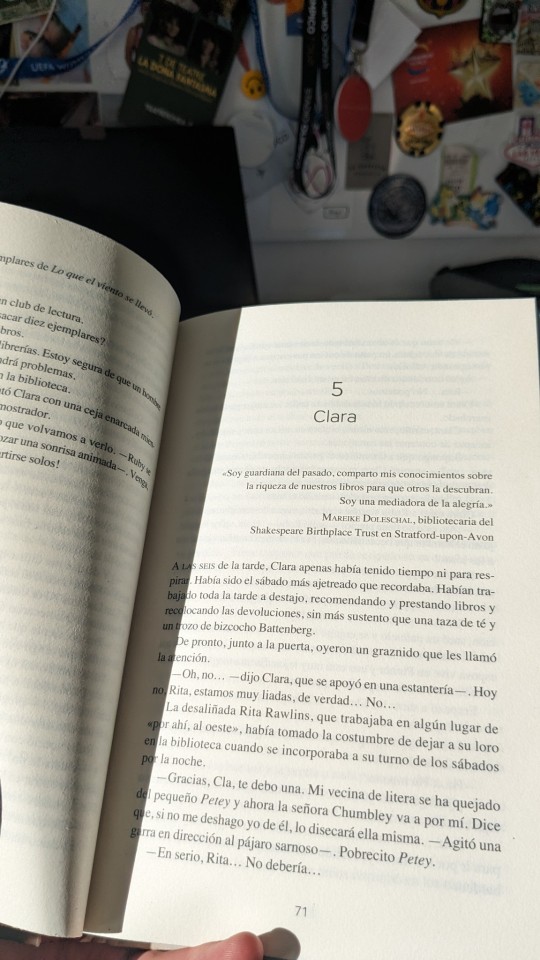
Highly recommended reading!
#books recommendations#books reviewed#book review#books#writers and poets#quotes#dark academia#poetry#aesthetic#wlw post#wlw blog#dark acadamia quotes#wlw love#books & libraries#books & reading#books & coffee#words#words words words#art#dark art#history#world war 2#ww2 history#light academia
12 notes
·
View notes
Text
Courageous Community
#BOOKREVIEW - Courageous Community - #TheUndergroundLibrary #blog
The war is on and come to London, impacting lives in various ways, but one community’s spirit is bolstered through books in Jennifer Ryan’s The Underground Library.
The Bethnal Green Library has just gotten a new deputy librarian in Juliet, who’s been provided the role while men are fighting in the war and she’s keen to bring her ideas to life in this cultural hub, with or without the approval…
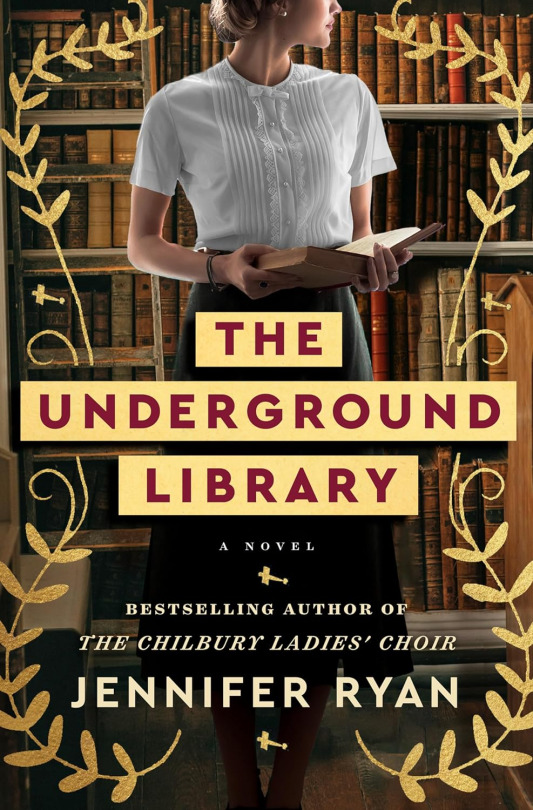
View On WordPress
0 notes
Text
Maria Sowter is a writer~artist~librarian from London, UK, previously living in Ho Chi Minh City (Saigon), Vietnam.
With an MA in Art & Society from Utrecht University, The Netherlands, and several years in the PR world as a tech writer, her writing can be found in a broad range of publications from Art & Market to TechCrunch and The Guardian Labs.
More poetic endeavours have been featured in independent press, including The Toe Rag, Loose Associations, AJAR and OF ZOOS.
She founded Bay Library in 2017, now with twin libraries in London and Saigon, and the thơughtful collective in 2021. She continues to explore the role of art in society through an experimental interplay of personal practice and collective endeavours.
*
mariasowter[@]gmail.com
*
Current & Upcoming
The Toe Rag ~ Consumption Issue ~ out now ~ London, UK
thơughtful craft club summer series ~ 12.06.24 ~ Bethnal Green, London, UK
Saigon Experimental Film Festival at SET Social ~ 18.07.24 ~ Peckham, London, UK
Bay Library w/ ITO collective ~ 09.24 ~ Rotterdam, The Netherlands
0 notes
Text
04|01|2023


I have a lot of time to spend on vacation, but also a lot to study. Since I did not want to waste the time in London decided I would do a tour of the libraries. Today I went to Bethnal Green, spent some time in the library (where I wrote 500 words for my reflective paper) and took a walk in the park. Later I had soup and chai in a wonderful coffee shop called Gallery Cafe. I'll be definitely go back there. I also finished reading the Year of the Gardener by Karel Čapek.
0 notes
Text
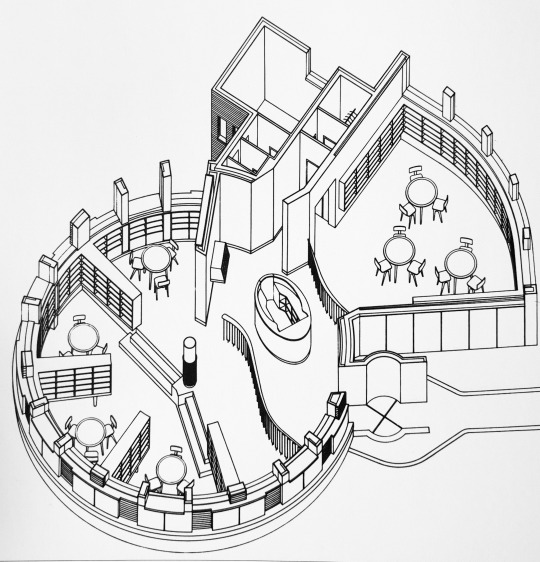
Community Centre and Library, Dorset Estate, Bethnal Green
1957
Skinner, Bailey & Lubetkin
Modernist London
61 notes
·
View notes
Text
PETER BLAKE’S ARTICE IN DORSET LIFE EXPLORES CARTER’S TILES!
Peter Blake’s Article in Dorset Life on Carter’s Tiles! A fantastic read!
Carter’s Tile Manufactory
Peter Blake looks at the origins of the company that would become Poole Pottery
Published in August ’16

The famous ‘Welcome to Poole’ sign at Sandbanks
How many of the millions of commuters and tourists who use the London Underground every year give a thought to their surroundings, in particular the countless tiles which line the tunnels and decorate the stations? Very few, I am sure. If any do, perhaps they would be surprised to know just how many were produced in Dorset, a county not always considered to be in the forefront of manufacturing output. However, a small part of Poole was a major player in the production of tiles and other ceramics used in the building trade for nearly 100 years. This is the story of Jesse Carter and his family, and their impact on Poole from the 1870s onwards. Dorset clay has been used for pottery for thousands of years. Indeed, some of the earliest fragments of fired pottery which have been found locally go back to the Neolithic period, c. 3000 years BC. The clay was mainly used by local potters until the 18th century, when improving transport links led to an increased demand for the fine white plastic ball clay from potteries all over the country. The following century saw a massive building boom, with the associated demand for ceramics for the building trade, such as roof tiles, chimney pots, drainpipes, and floor and decorative tiles. To meet this need, a number of potteries sprang up around Poole.
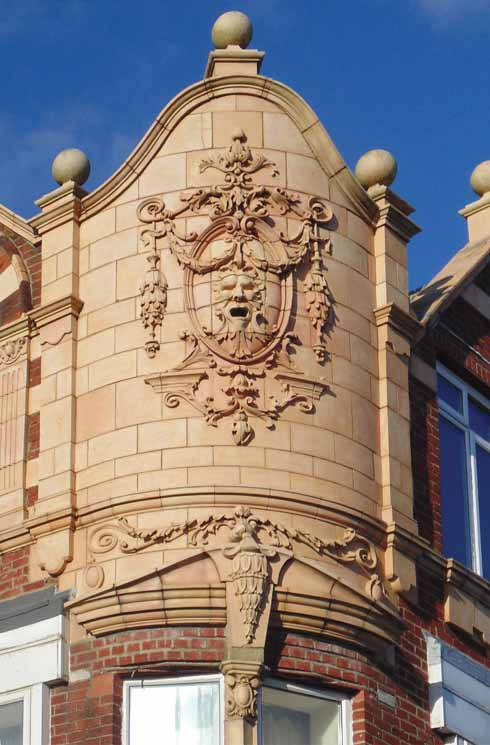
Lovely detailing on this corner building at Julian Terrace in Southbourne, Bournemouth
One such was the Patent Architectural Pottery Company, founded in Hamworthy in 1854 to supply high-quality goods for the better class of builders. James Walker, an employee of this company, decided to branch out on his own, and around 1860 set up the Walker Patent Encaustic and Mosaic Ornamental Brick and Tile Manufactory on East Quay, Poole. He fairly quickly got into financial difficulties and came to the attention of Jesse Carter, an enterprising businessman who visited Poole often in the course of his work as a partner in an ironmongers’ and builders’ merchants in Weybridge, Surrey. He saw the potential for the ailing business and acquired the site, by now derelict, in 1873, renaming it Carter’s Industrial Tile Manufactory, later to become Carter & Co, with a subsidiary company called Carter Stabler and Adams being established in 1921, which eventually became the worldwide success that was renamed Poole Pottery in 1963. Born in 1830 in Abbots Worthy, the son of a bricklayer, Jesse Carter benefited from the building boom of the 19th century. A journeyman bricklayer in 1851, by 1861 he was a builder employing 49 men and five boys. There are records in Hampshire Record Office of a number of land sales involving Carter in the Winchester area during this period, and it is likely that he did well out of the growing demand for land in an area which was developing rapidly, with a big increase in the demand for housing following the opening of the railway station in 1839. In 1871 he was living in Weybridge, but moved to Poole soon after acquiring the pottery site, living first in Market Street, then later in West End House, a very imposing Georgian residence, which still stands. He began to expand the range of tiles produced at the pottery, alongside the old ‘Carter’s red’ floor tiles, producing more decorative glazed, modelled and painted wall tiles for the growing interior design market. By the middle of the 1880s, the business was thriving, and Jesse took three of his sons, Charles, Owen and Ernest into the company, Ernest sadly dying in 1887 of rheumatic fever at the age of 27. With the involvement of his sons in the business, Jesse started to take a less active part in the day-to-day running of the pottery and moved to West Cliff Road in Bournemouth, Owen taking up residence in West End House.

The Norton Free Library (now a Wetherspoons pub)
Owen was the driving force behind the introduction of decorative pieces and tableware into the repertoire of the pottery, in his capacity as Art and Technical Director. A friend and admirer of William de Morgan, who designed tiles for William Morris, Owen set up a potter’s wheel in a stable at the rear of West End House, where he started experimenting with the development of ornamental wares. In 1912, production of the more straightforward floor and wall tiles was shifted to the Hamworthy sites owned by the pottery, with the East Quay site concentrating on the more artistic end of the spectrum. Owen’s involvement with what became the world famous Poole Pottery ended with his death in 1919. Carter and Co produced their tiles over a period of nearly 100 years, from 1873 until the company was merged into Pilkington Tiles Ltd in 1964. In 1962, production was estimated to be 100,000 tiles per week, with the tunnel ovens on site using more gas than the whole of Salisbury.

The Poole coat of arms on Poole Bridge
Although the ornamental ware received more attention, the plainer output of the pottery was vital to the continuing success of the business. Carter’s supplied many of the tiles which line the London underground tunnels. They also produced relief tiles for the decoration of the stations, for example Bethnal Green, depicting London scenes. Carter’s was also responsible for the platform tiling for the Victoria line. The company produced blue plaques put up by the LCC, and later the GLC, for many years until they stopped making them in 1981. Other bread and butter work was also important, if unglamorous. The supply of glazed bricks and ceramic tiles for commercial premises such as pubs, butchers, cinemas and the like provided a lucrative business, allowing the more decorative side of the pottery to develop and flourish. Fortunately, a number of examples of these ornate frontages and signs still exist in our area, for example: the Branksome Arms, Commercial Road, Bournemouth, which is Grade II listed; the Goat and Tricycle in Westhill Road, Bournemouth (previously the Pembroke Arms); Westbourne Cinema (now Westbourne Club Grand Bingo); Jenkins and Sons, a 1920s butchers and fishmongers at Penn Hill, Parkstone (still called Jenkins and Sons, but now a café bar, with the facade preserved); the Welcome to Poole signs such as the one situated at Sandbanks; the Swan Inn and Poole Arms pub, both in Poole; and the Poole town coats of arms, displayed on Poole Bridge. Other examples can be found fairly close at hand, for example New Milton, Salisbury, Romsey and Portsmouth. Poole Museum would also be a good starting point for anyone interested in finding out more about Carter and Co’s output. For more detailed information, please look at the Facebook page of the Tile Lady, a local expert who provides illustrated talks and undertakes guided tours giving information about noteworthy buildings and tiled features in the Bournemouth and Poole area. If visiting any of these sites, try to do so on a sunny day, just after rain if possible, as the coloured tiles will be seen to their best advantage then, taking on jewel-like qualities.

The front of Jenkin and Son in Parkstone
The Carter family had a long-lasting impact on the life and times of Poole, continuing right up to the modern day. As well as employing people at Carter’s and later Poole Pottery, another of Jesse’s sons, William, took over the ailing Kinson Pottery in 1884, making it a going concern. His son, Herbert Spencer Carter, OBE JP, went on to be Mayor of Poole five times, the first time in 1912 at the age of 32. In 1946, Herbert Carter Secondary School was opened, named in his honour. Still operating, now as Carter Community School, this establishment has educated many thousands of Poole’s children. Poole Pottery has attracted well-deserved fame for the innovative design and use of colour in its ceramics, spreading the name of Poole throughout the world and attracting countless visitors to its premises. Although the bulk of the manufacturing is now carried out at Middleport pottery in Staffordshire, new designs are still created, fired and painted in the Studio Pottery on Poole Quay, continuing the tradition going back over a century.

The Swan Inn in Poole
Jesse Carter died in 1927 at the grand old age of 96. Little can he have thought when he first saw a derelict and failing pottery in 1873, that the company he founded would have such a profound effect not only on his own family, but on the town of Poole as well. www.poolepottery.co.uk
2 notes
·
View notes
Text
Document 7
The king has a book.
The King's Men.
It is a thick, heavy book, green with age, and it bears the impress of numerous pages yet to be written. The surface is lined with lead, the edges of which have been worn away by the passage of time.
It has the appearance of a tome of ancient knowledge, and yet it is a tome of modern knowledge, equal parts, that the world can read now.
There is an inscription in the centre of the cover which reads:
Sed hallucina rationis sumus occurreat sed pedibus fuissent. Wider noli me imparato.
Translation: In the madness of freedom certain things occur but they are not all there yet. Better to have feared nothing and found that what you feared has been overcome.
© Sejm, 1541.
The King's Men is not a work of art. It is a book of instruction, of facts to be learned and laid before the young of both sexes. It is a form of learning which considers the way in which the mind deals with ideas, and values knowledge not for its intricacy of design or subtlety of presentation, but for its comprehensiveness of purpose. This teaching method finds the most fertile ground in the curriculum of a university.
In this context the title of the book introduces a new element. While you may find a quarto of the text in a bookstore, the king's men is a proper part of an university library. It is but a shortwork, perhaps twenty pages of hard-bound parchment filled with obscure epigrams and reflections about philosophy. The epigrams range from the most ordinary to the most extravagant of praise, and often take the form of a poem, composed in the third person. This third person style differentiates itself from the customary first person by the opaqueness of the speaker. The book is a work of profound wisdom; you will find nothing of interest in it save on the page within easy reach.
If you should, however, happen upon the cobblestoned alcove that lies at the heart of Gamber, and lie down there as the black dog does and sleep as the blind man sleeps, and the black dog-man is close at your side, and you begin to read this book to this poor weary child of six -
Into the alcove squat, slinking, nimble, vast Chrestomath.
The King's Men begins with a prologue, composed in a portion of the King's Men that has long since been lost to study. It is fragmentary, ornate, and beautiful.
These first fifty pages are, for the reader, a kind of introduction to the work. Even as a youth of puberty I had never read such care for an allegory. The child is shown within a dormitory room, and is being ferried there by two men clad in black' (this sentence is in the twentieth). Disguised as a scholar, he meets his companions, and the rest of the book is an imitation of vast, sweeping thesis to be pursued in the light of such a theme. Oh, where were we?
Let us take a second to review the history of our situation. For a single day in 1916, much of the political universe was turned upside down. The far left won the continuing Tom Mann War in much of the nation's centre: we had no official war, only a peculiar variety of general strike. Die.'s rebellion was at its height. The terrible horror brought by the Flu was still upon the country. Total war was declared two days later. There is grave irony here even as we turn to the page. Fire-bombing commenced on January 23rd: in Camberwell and Bethnal Green, indiscriminate killing of rich and poor alike which the world had not heard of for another three years.
Something of this history has remained unknown. It cost us our independence to force error upon a nation, and in its history books it is not remembered. For more than four hundred years, from William of Orange's entry in the Balfour Declaration in 1897 to the Queen's proclamation of the Falkland Islands War in 1984, every moment and every thing within several hundred miles of Coventry had been relegated into stiffly printed chapters, treating in heated technical detail overwrought long passages (if such a thing were possible) dealing with some cumbersome aspect of military doctrine or logistics or uniforms. In place of pages of printed detail, in place of pages of printed verse, in place of sets of nearly glowing illuminated initials, in place of stout juicy sections of newspaper, in place of radio drama, we have now pages of photographic reproduction. They have left us little more than the title of the work, and an indication of the type of reader it is intended for. I do not expect you to anticipate the recommendation I am about to make: We Shall Not Turn The Other Cheek .
I will not, perhaps, make this prologue into a long paragraph. It is, so to speak, my cameo in the prologue of the work: I see speech but you do not, and there is little matter in which we are more like each other than in respect of that respect in which we do not turn the other cheek: and shall we make, with the others, a catalogue of our tribute a skills manfully drafted, and recite, one by one, our speeches of tribute, our assent, our affidavits?
Men do not do this so much any longer, even in address to their fianc��e. There was an emotion there that attested in its suddenness to a new purpose: a goddess had risen from the side of the pole, and with her attention she devoured the words we were receiving. The respect and awe in which we held the words had its uprush, though, its own sudden ruin. And now its early note ceased, and it threw itself once more into oblivion. Into its place would Dr. R. propose incantation after incantation of honourable and magnanimous feeling as it had been, in incident have been, in sentiment -
Honourable et dignité dignitaire
- Eternity and eternity. For Ian Osborn, the crowning act of the prologue, the effect is a kind of romantic transformation.
I. A Land in Tir Tairngire
IN Magazine of Fiction and family history
1950
It's impossible to say, I reflect, what humans would be like if they had never gone up into the sky on a meteor, if they had never been able to fly. The monkeys below us imagine that they could have scaled the valley walls from the Zoological Garden and climbed bodily harder to the higher world of men, and we horses weigh only about two hun- dred pounds and can outclimb even the spirit of our hero: for fame. Tiny and slow, insectile and imbecilic, he climbs like a dinosaur and quite tamely.
But my mind tends to last forever; and with the falsehood of the causality machine now removed from my thinking, I imagine that anyone who has climbed up on his huge winged steed and been sick to look upon the earth below would stare ruefully at the moon, seared into his retinas, if he were with me now. That there is nothing "distant," less "intimate" than stars—a meaningsrint concealed in discussions of combatant forces and planetary resources—but that if I was to offer my hand and potter's field cheek-by-jowl as a hand-and earth--and terran shell, he might
1 note
·
View note
Text
In honor of the day after Fanfic Writers Appreciation Day I’d like to give a quick shout-out to my fav writers out there + rec one of their works. (this is not an exhaustive list so pls bear with me if ur not included..) Now in alphabetical order:
SPN fic:
@60r3d0m - He Bids Good-bye to Distance
Maybe the reality is that he clings too much. Maybe he’s too desperate and sometimes, that makes him unkind. Sometimes, he’s rough, because it’s purgatory, because every godforsaken monster wants Cas, wants his angel who’s had the misfortune of being stranded here with him, so he snaps. So he says, Hey, Cas, get the fuck over here, if Cas strays too far. He says, Damn it, Cas, if Cas takes a step too deep into the woods without him, and then he yanks, takes the angel by the hand, brings him closer and closer, and with hands on Cas' hips, he guides him. And then eventually, the true hunger of purgatory gets to Dean.
#destiel #purgatory era #explicit
@babybluecas - Meeting Emma
Dean’s pacing the hospital corridor like some nervous expecting father. After all, that’s who he is right now. And the daughter he didn’t know he had will be here any moment.
#destiel #modern au #dad dean #established relationship
@beefcakemish - “I think I wanna marry you”
Absolutely everything has gone wrong on the day of Cas and Dean's wedding. Cas is almost ready to call the whole thing off.
#destiel #modern au #weddings
@bend-me-shape-me - The Long Way Home
The one fic where Dean and Sam start a new life, meeting someone in the middle who will complete their their way to find their new home.
#destiel #modern au #family drama #misunderstandings
@jhoomwrites - The King’s Shame
Castiel has inherited the crown after years of turbulence. His family has not been good to their people, and Castiel has much to atone for. He works so hard to bring peace, but his attraction to a kitchen boy might throw all that he’s worked to build into jeopardy…
#destiel #medieval au #king cas #peasant dean
@peanutbutterjelly-pie - After All These Years
“Please, Dean!! Please!”
“Are you kidding me?”
Jo's eyes are suddenly very big and wide and a serious competition for Sam's puppy dog look. “It's just for a weekend …”
“You want me to pretend to be your freaking boyfriend?”
#destiel #dean/jo (pretend) #au #fake relationship #single dad dean
@perfackles - Strangers In The Night
When his life in San Francisco takes an unexpected turn, Sam decides to move back to Kansas with the hope of mending his relationship with his brother. Sam must now learn how to navigate the turbulent waters of his future while coming to terms with the demons of his past. Along the way Sam meets a mysterious stranger, Castiel – a man hopelessly besotted with his rather oblivious best friend. But there's more to Castiel than meets the eye, and a secret hanging over all their heads that could unravel everything they’ve worked so hard to build.
#destiel #one-time sam/cas #saileen #team free will
@procasdeanating - A Question of Silence
England, March 1343: A new student enters the gates of St. Mary’s Well monastery. Dean Winchester struggles with his family's dark secret and the taint he's sure it left on his soul. He finds a friend in the young novice Castiel, who has pledged himself to a life of austerity and contemplation. In spite of being polar opposites in nearly every way, they fall for each other.
#destiel #historical au #religious conflict #explicit
@wanderingcas - atramentous
Dean is a librarian who hopelessly falls for the shy, mysterious, book-savvy grad student who frequents the university library.
#destiel #modern au #librarian dean #student cas
Good Omens fic:
@rosemoonweaver - Of Penguins, Swans, and Magpies
It's been six months since the world didn't end and things between Crowley and Aziraphale are... fine. Really, they are. They're together and happy and everything is just... fine. Except for the strange disconnected feeling that it's all sort of off and the fact that Aziraphale is changing the bookshop and wearing different clothes and being shady and Crowley is on edge and moody and...
Okay, so everything isn't perfectly fine.
#ineffable husbands #wing fic #misunderstandings
@rcmclachlan - A Stone’s Throw From Jerusalem
"Are you honestly going to make me listen to bebop in my final moments?”
#ineffable husbands #accidental marriage
TardisIsTheOnlyWayToTravel - Boredom in the Bookshop
An awful, wicked idea began to form in Crowley’s mind as he stared at Aziraphale. Ordinarily he wouldn’t have dared to put such an idea into action out of a sense of self-preservation… but he was so bored. (Being bored always impaired Crowley’s judgement, which was how, in 1850, he ended up drunk, entirely naked, painted blue, and tied to a post in the middle of Bethnal Green. Aziraphale had to rescue him. The angel still referred to the incident on occasion. Crowley wished he’d forget.)
-Crowley was bored. This was never a good thing.
#aziraphale/crowley #aziraphale & crowley #footnotes
TUA fic:
intheflowers - Wild Eyed Boy
Klaus dropped into Dave's life with a flash of blue light. It was the first time Klaus suprised him, but it was far from the last, and while at first he’d wondered if Klaus was maybe a little mad, it wasn’t long before he was certain that he really, definitely was. Not that it mattered much. Klaus had stolen his heart long before then.
#klave #dave pov #vietnam war #angst with a happy ending
#fic rec#long post#spn#good omens#tua#destiel#ineffable husbands#klave#ufff#okay look i made this list in between everything today#so srsly don't be sad if i didn't icnlude u!!#i tried out zumba for the first time today!!:D#it was exciting. i enjoyed it tbh#so anyway i would've added my thoughts on each fic#but then i couldn't have included so many of them..#*include
88 notes
·
View notes
Text
dear mom and dad
a few days have passed since I first came here I am so sorry for not writing sooner but I have been so obsessed with this place I really haven't got time to write a proper letter.
London is absolutely amazing. Everything is exactly what I imagine it would be. I spent a day in Harry Potter world. The ticket was very expensive but worth it. I took some pretty picture of me in Hogwarts express and 9 3/4 station which are enclosed with the letter. the next day I took a brief trip to Buckingham Palace. I had expected to see the queen but clearly is was hopeless. Then I went to Bethnal Green library. This library was absolutely gorgeous. The building made by red brick and surrounded by trees. Inside the library there was a thousand and thousand of bookshelves, a hundred selection of books for adults and children. You don't know how hard it is for me to left the building.
The food here isn't so bad but, still, I miss your cooking, mom. I spent the rest of the day watching some telly. Do you know that people in here they say telly instead of Television? that's funny.
anyway I am writing this letter while I am having a typical England breakfast. the biscuit not so sweet and the tea is amazing I think I might buy some tea as a souvenir for you, Dad.
I gotta go now. I have three more destinations to visit to. I hope to return home as soon as the week is end. Can't wait to tell the details.
love,
your daughter,
Sansa
1 note
·
View note
Photo


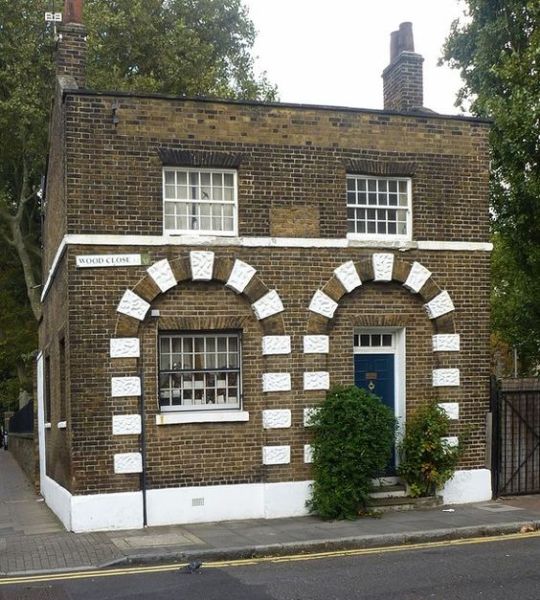

The Parish Watch House, Bethnal Green: Early, 1946 and more recently. It stands in the churchyard surrounding St Matthew’s (painting via Guildhall Library & Art Gallery). To protect the buried corpses in the churchyard from “resurrectionists” and those from Guy’s and other new London Hospitals who were not overly-fussy where the bodies for their research and teaching actually came from, the Watch House was built, and by 1792 a person was paid 10s 6d per week to be on guard. A reward of 2 guineas was granted for the apprehension of any body snatchers and the watchmen were provided with a blunderbuss which could be fired from an upstairs window after sounding a rattle three times. This right is still held by the churchwardens today.
Sources: flickr.com, pinterest.com, St Mathew’s Bethnal Green, and originating from an idea by Murray Whyte
36 notes
·
View notes
Text
The Widow’s Best of 2019

Welcome readers to our Best of 2019 round-up. Some of you might remember that when one half of The Widow, Liz Arratoon, started writing about the circus 25 years ago – with Widow other half Adrian Arratoon by her side – she was almost a lone advocate for the art form. Don’t you get jaded, people ask us. Absolutely not! But we do long for something a bit different, and this year we have been disappointed that so many circus shows and acts have started to look a bit similar and yawny.
One notable exception gets our Best Show, and we did love Company Soralino’s clowning with cardboard boxes, and Mizuki Shinagawa on silks at the 40th Cirque de Demain festival, but we have cast our gaze beyond circus to take in whatever else has taken our fancy. Just to remind people, and before any more sensitive hearts are broken, anything we have seen this year, no matter when it was created, is eligible for selection, but if we haven’t seen it, it isn’t. Our list, our rules, and, in no particular order, here it is. All shows are in London unless otherwise stated.
BEST SHOW: We really enjoyed Aurelia Thierrée’s Bells and Spells at the Norfolk & Norwich Festival, but our Best Show is La Nuit du Cerf (A Deer in the Headlights) by Cirque Le Roux, seen on French TV. This is the company’s follow-up to The Elephant in the Room, and new cast members Valerie Benoit and Mason Ames join the original troupe of Lolita Costet, Yannick Thomas, Philip Rosenberg and Gregory Arsenal. Together they showcase a sophisticated and exquisitely choreographed blend of top-flight acrobatics, handstands, hand-to-hand, roller-skating, tight wire, you name it, in a totally fresh and exciting presentation, all backed by a wonderfully eclectic soundtrack. If only more companies could come up with something so innovative.
youtube
FEMALE ARTIST OF THE YEAR: Extraordinary acrobat Esmeralda Nikolajeff, part of the line-up for Barely Methodical Troupe’s third show, SHIFT, which opened the London International Mime Festival at the Platform Theatre.

MALE ARTIST OF THE YEAR: Wes Peden, juggler, who had a scintillating guest spot in Gandini Juggling and Alexander Whitley’s show Spring at Sadler’s Wells. Don’t miss his solo show Zebra at the Southbank Centre’s Purcell Room during the London International Mime Festival in January 2020.

BEST GIG: Le SuperHomard in the library at the Institut Français as part of the Music Rendezvous season, and Durand Jones and the Indications, seen at the Southbank Centre’s Queen Elizabeth Hall during Meltdown.
MOST ENTERTAINING: Lucy Worsley’s talk about Queen Victoria at Southwark Cathedral.

BEST VENUE: The Poodle Club in Sydenham.
BEST ACT: Foot-jugglers Marina and Svetlana Tsodikova, who are the Crystal Ladies in Cirque du Soleil’s Totem. They also get MOST GLAMOROUS.

BEST COSTUMES: Alejandro Gómez Palomo for The Male Dancer, choreographed by Iván Pérez, seen on the Arte app; Jean Paul Gaultier’s Fashion Freak Show (pictured below) seen at the Folies Bergère in Paris, and Queen Victoria’s crown, designed by Sheila Hay for A Night with Thick and Tight at the Lilian Baylis Studio, during the London International Mime Festival.

BEST INTERVIEW: Alec Baldwin’s chat with Elaine Stritch on his podcast Here’s the Thing.
BEST MAGIC TRICK: Shin Lim, winner of America’s Got Talent: The Champions 2019, doing card tricks.
LOUDEST GASP!: This photo of Joan Crawford, seen on @cjubarrington’s glorious Twitter account, where he posts vintage photos of Hollywood stars.

BEST MOVE: Anything by world champion football freestyler Liv Cooke.
BEST CASTAWAY: Living legend John Cooper Clarke on Desert Island Discs on BBC Radio 4.

BEST GOWN: Kathleen Nellis’ fabulous recreation of Marlene Dietrich’s ‘naked’ dress for Peter Groom’s show Natural Duty, originally designed by Jean Louis. Peter also wore it in Dietrich: Live in London, seen at the Crazy Coqs, Live at Zédel, for which he gets BEST CABARET.

MOMENT OF WONDER: Andy Goldsworthy throwing handfuls of snow into the wind in the documentary Rivers and Tides.
BEST LOOK AT THE MET GALA: Harry Styles wearing a sheer Gucci blouse!
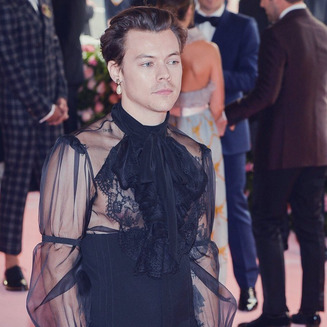
HOTTEST TICKET: Phoebe Waller-Bridge’s solo triumph, Fleabag, at Wyndham’s Theatre, and, yes, we did speak to Andrew Scott this year!
FUNNIEST PERSON: David Mills, who stormed New York with Bitter Endings, but we saw him at the Poodle Club. Someone! Book this show for London!
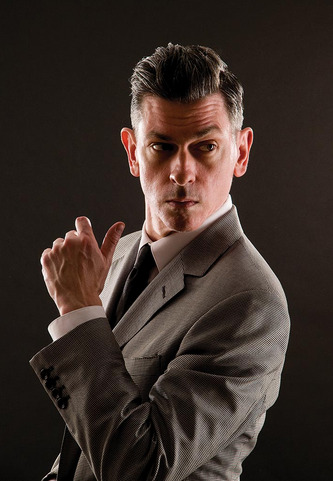
BEST DANCE: The Seasons’ Canon choreographed by Crystal Pite at the Opera Garnier, seen on the Arte app.
BEST SET: Anna Reid’s simple, stylish and effective design for The Sweet Science of Bruising at Wilton’s Music Hall.

BEST SHOWBIZ STORY: The Man Behind the Microphone, first heard on Outlook on BBC World Service. The story of how filmmaker Claire Belhassine discovered that her unassuming Tunisian grandfather, Hedi Jouini, had been a singing megastar. Then we found the film of the same name.

BEST DOCUMENTARY: Liz Garbus’ 2016 Leave Nothing Unsaid, in which Anderson Cooper interviews his remarkable mother, Gloria Vanderbilt, about her life. Devastating and moving.
MOST FLAMBOYANT: Zack MacLeod Pinsent, who dresses like this all the time!

BEST SHOWBIZ BOOK – MALE ARTIST: Me by Elton John with Alexis Petrides.
BEST SHOWBIZ BOOK – FEMALE ARTIST: Dreamgirl: My Life As a Supreme by Mary Wilson… of the Supremes, with Patricia Romanowski and Ahrgus Juilliard.
BEST AUDIENCE: Ah, woof!

MOST NOTABLE ANNIVERSARIES: Ten years of The Double R Club, which was founded by Benjamin Louche and Rose Thorne, and runs at Bethnal Green’s Working Men’s Club, and three years of Cabaret vs Cancer, the registered charity started by Rose.
BEST VINTAGE CIRCUS PICTURE: Coo!

BEST FILM: Spike Lee’s BlacKkKlansman – which should have won the Oscar – and Olivia Wilde’s delightful teen comedy Booksmart.
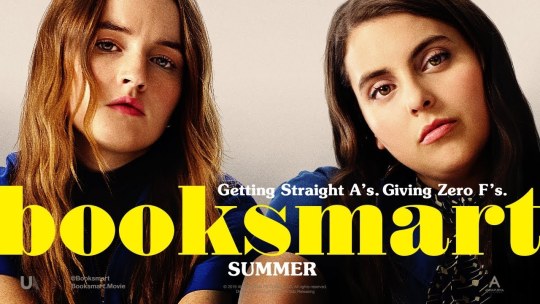
BEST FILM SCORE: Out of Blue by Clint Mansell.
MOST IMPRESSIVE MEMORY FEAT: An hour and 40 minutes’ worth of words spoken by the one and only Maggie Smith, who returned to the stage in A German Life at the Bridge Theatre.
MOST ALLURING: Dina Martina, seen at Soho Theate Downstairs in Forgotten but Not Gone.

MOST MISSED: Agnès Varda, Clive James (born Vivian Leopold James!), and the French TV variety show Le Plus Grand Cabaret du Monde, hosted by Patrick Sébastien, which started in 1998 and ended this year.
GONE FAR TOO SOON: The creative genius Nell Gifford, co-founder of Giffords Circus, who died at 46.
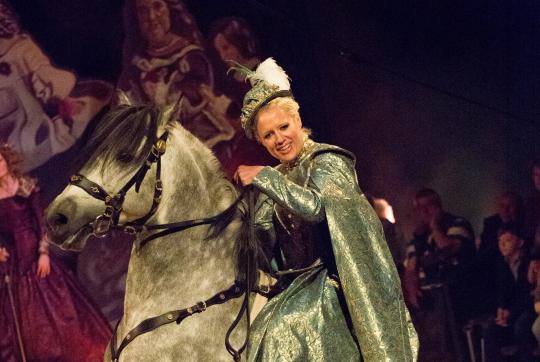
MOST ANTICIPATED: Obviously Wes Peden’s previously mentioned Zebra, and Daniele Finzi Pasca’s latest creation, NUDA, premiering on 11 September 2020 at LAC, Lake Lugano in Switzerland.

Look out for our first interview of 2020, with Scottish aerialist and acobat Lauren Jamieson, who has a PhD in chemistry but gave up her science career to focus on circus full time. She will appear in The Feathers of Daedalus show Tarot during the Vault Festival 2020.
Picture credits: Company Soralino, Valérie Thénard Béal; Wes Peden, Pierre Feniello; Peter Groom, V’s Anchor Studio. Any we’ve missed, please let us know.
Follow @TheWidowStanton on Twitter
© thewidowstanton.com
#best of 2019#cirque le roux#Wes Peden#barely methodical troupe#john cooper clarke#shin lim#lucy worsley#nell gifford#david mills#harry styles#liv cooke#compagnia finzi pasca#Esmeralda Nikolajeff#anderson cooper#maggie smith#Dina Martina
2 notes
·
View notes
Text
10 of London’s must-visit secret art galleries
Whether you’re looking for on-the-rise artists or the Western world’s most esteemed Old Masters, London’s art trail never disappoints. Its landmark museums and galleries are strangers to no-one – but swap a day at the Tate for a clutch of lesser-known galleries, to experience the city’s creative flair from a cutting-edge, and often far less crowded angle.
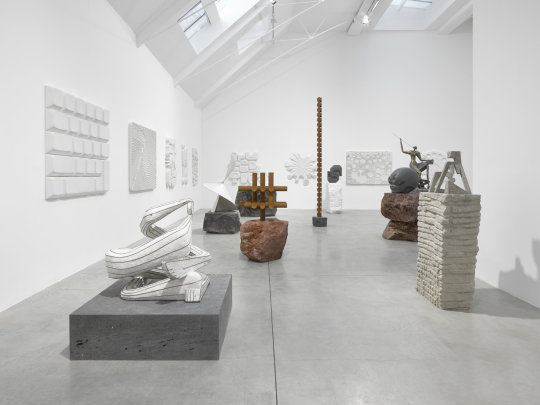
Pedro Reyes at the Lisson Gallery, 27 Bell Street, London. Image courtesy of Lisson Gallery/Pedro Reyes
Lisson Gallery
Since its opening in 1967, Lisson Gallery has brought celebrated artists to the forefront of London’s art scene, with Anish Kapoor, Lee Ufan, Ai Weiwei and Richard Deacon just some of the internationally-acclaimed names to have made their mark within its clean, all-white interiors. Perfectly placed between Edgware Road station and Regent’s Park, it’s a must-visit for anyone making their rounds of Marylebone’s upscale boutiques and landmark museums.
Address: 67 Lisson St, Marylebone, London NW1 5DA
Maureen Paley
Wander east of the capital’s hip-and-happening Shoreditch to find this small gem of a gallery, hidden away in a warehouse-style building so discreet and nondescript, that anyone searching for it would almost certainly walk right past its door. A moment’s walk from Bethnal Green station and garden, its red-brick façade conceals fascinating interiors, however, as it shows off the ground-breaking multimedia works of contemporary artists, including Turner prize winners Wolfgang Tillmans and Gillian Wearing.
Address: 21 Herald St, London E2 6JT

Dulwich Picture Gallery, London. Image courtesy of Dulwich Picture Gallery/Adam Scott
Dulwich Picture Gallery
Founded in 1811, this quaint Dulwich hub is the world’s first purpose-built art gallery that houses more than 600 paintings to date. From the works of Rembrandt, Canaletto, Rubens and Fragonard across its permanent collection, to its fascinating themed exhibitions, talks and community-led learning programmes, it’s an institution within its local community and a landmark destination for fine art-lovers – yet retains its under-the-radar status, particularly by way of its location, tucked away near Dulwich Park in leafy southeast London.
Address: Gallery Rd, London SE21 7AD
Victoria Miro
Spread across a former furniture factory in Hoxton and a classic red-brick building behind Sotheby’s in Mayfair, Victoria Miro is perhaps best known amongst modern art fanatics for housing the playfully dotted sculptures of Japanese artist Yayoi Kusama. Since its conception in the 1980s, it has also been graced by the works of Grayson Perry, Isaac Julien, Idris Khan, and more international names boasting varied portfolios of paintings, sculptures, photography and cinematic installations.
Address: 16 Wharf Rd, Hoxton, London N1 7RW

‘Leaving the Theatre’ by Carlo Carra (1910) at the Estorick Collection, London. Image courtesy of Estorick Collection
Estorick Collection
A London go-to for acquainting yourself with modern Italian art at its finest, the Estorick Collection opened in 1998 within the walls of a Grade II listed Georgian townhouse, to exhibit Futurist artwork alongside figurative art and sculptures from the late 1800s to the 1950s. Its carefully curated exhibitions are thoughtful and exemplary, with famous names such as Modigliani, Emilio Greco and Marcello Geppetti displaying the influence and power of Italian art and culture.
Address: 39A Canonbury Square, London N1 2AN
Hauser & Wirth
Though it has no fewer than nine venues across the world, set in everything from an impressive Gstaad chalet to a converted Somerset farm, Hauser & Wirth remains an independent gallery offering a refreshing take on contemporary art. Located in a sought-after central London location – the prestigious Savile Row – it presents the works of both emerging and established talent, with an impressive roster that includes Paul McCarthy, Fausto Melotti and Fabio Mauri. Expect spectacular diversity across the board – from the themes explored, to the mediums showcased, to the many origins and stories of its international artists.
Address: 23 Savile Row, Mayfair, London W1S 2ET
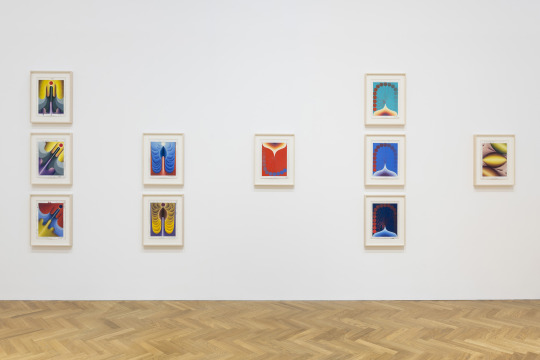
‘Loie Hollowell: Dominant / Recessive’ at Pace Gallery, London. Image courtesy of Pace Gallery/Damian Griffiths
Pace Gallery
Situated between Piccadilly Circus and Green Park tube stations, Pace Gallery enjoys a central location in a wing of the Royal Academy of Arts. Founded in Boston in 1960, you’ll find its venues across New York, Hong Kong, Beijing, Seoul, Palo Alto and Geneva – making it rather well-known amongst seasoned art followers, yet unknown enough for you to enjoy a relatively crowd-free day of art-viewing in the Big Smoke.
Address: 6 Burlington Gardens, Mayfair, London W1S 3ET
The Crypt Gallery
A goose bump-inducing site of historic wonder, the Crypt of St Pancras Paris Church has been used throughout its 200-year-old history as a burial site and air raid shelter, before its most recent transformation into a gallery space – leading the way for imaginative art venues in central London. Wander its vaulted underground pathways to explore its thought-provoking programme of 21st-century art exhibitions and immersive dance performances.
Address: Euston Rd, Kings Cross, London NW1 2BA

‘A Coin in Nine Hands – Part 1’ (2017) at Large Glass, London. Image courtesy of Large Glass
Large Glass Gallery
Open Wednesday to Saturday, this Caledonian Road hotspot offers a unique and innovative approach to its curation of contemporary art, with photography, sculpture and abstract paintings all featuring highly across its all-grey walls. Named after and inspired by the mind of Marcel Duchamp, it has housed the works of American visionary Sol LeWitt, Italian artist Guido Guidi and more, across a series of thoughtful thematic exhibitions since its opening in 2011.
Address: 392 Caledonian Rd, London N1 1DN
Banner Repeater
Housed along platform one of Hackney Downs railway station (yes, you read that correctly), Banner Repeater is an artist-run library and exhibition space set in the most unique of locations – a project which, funded by the Art in Empty Spaces government initiative, has helped introduce a rich cultural offering to the local community, as well as bring disused premises back to life. Just be mindful of its opening times when planning your visit: 8-11am Tuesday to Thursday, 11am-6pm on Friday, and 12-6pm on weekends.
Address: Hackney Downs Network Rail, Platform 1 Dalston Ln, London E8 1LA
Written for Secret Escapes’ blog, The Great Escape, published 18 September 2018.
2 notes
·
View notes
Text
Best Study Spots: East London Students

As I drag myself nearer and nearer the finish line of my undergraduate degree, I am starting to feel qualified in my recommendations of a handful of convenient coffee shops, workspaces and bars which make a pleasant change from the dreary, soul-sucking confines of university libraries. As a student of Queen Mary, I feel as if I have experienced basically every caffeine providing spot within a half a mile radius of our Mile End campus. So here is my humble attempt to round up the best undergraduate watering holes in and around East London...
The Coffee Room
Italian quality with an al fresco nook to match - The Coffee Room does what it says on the tin. Adjacent to Mile End Station, The Coffee Room offers authentic Italian coffee with a selection of deli specials to accompany your revision woes. Although seating inside is limited, Coffee Room redeems itself with its sunk in, patio / wooden garden off the rear of the building. The retractable awning, heaters and blankets allow the outdoor seating to be used rain or shine!
Pro: Quality coffee with a hit of hygee
Con: Wifi on demand / limited indoor seating
Recommended: Flat White & Raspberry brownie.
Find: 6A Grove Rd, Mile End, London E3
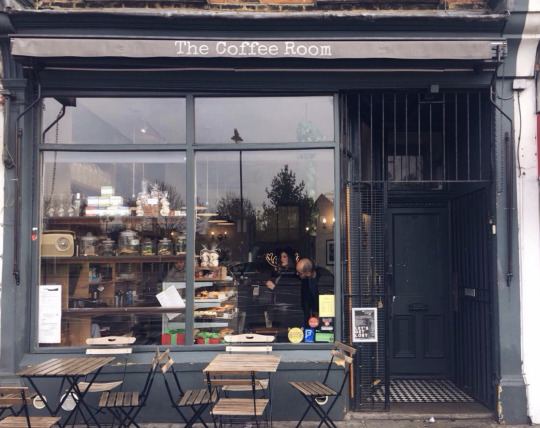
The International Comrades Cafe
With a central island seating, easy use wifi and plenty of plugs, Comrades Cafe will discipline you into actually writing that essay you were meant to start a week ago. With reasonable prices and a set up that is clearly targeted towards the student demographic of Mile End, Comrades can’t be faulted for its practicality. Although it has touches of personality in its mural of an old east end, it's not exactly a spot you will be jumping to add to your IG feed.
Nevertheless, Comrades name comes from the fundamental belief that
Pro: Practical and close to QM campus
Con: Interiors are ... average
Recommended: The window seat!
Find: 7 Burdett Rd, Mile End, E3
The Hackney Coffee Company
Oozing with character and dreamy East London charm, The Hackney Coffee Company serves wonderful speciality coffee, named after notable local areas such as Columbia Road Flower Market and Regent’s Canal. Personally, the high ceilings, leather sofas and skylights won me over. Studying in a pleasant environment does wonders for your mental wellbeing! The long workbench is surrounded by hanging plants and feels like a zen oasis.
Pro: Beautiful interiors
Con: On the pricier side
Recommended: Nabbing a seat at the workbench
Find: 503 Hackney Rd, Bethnal Green, E2

Hanbury Hall
Space! So much space is such a rarity in London. This beautiful space was originally built as a Huguenot Chapel in 1719, now it's a great study and working space which promotes creativity. Located just off Bricklane, it’s a great area to feel inspired. The hall offers free wifi which, if we are being realistic, is essential when working out of office.
Pro: Specifically used as a communal workspace
Con: Considering the size, a few more seats wouldn’t hurt
Recommended: Grab a seat upstairs, it’s a bit lighter!
Find: 22 Hanbury St, Spitalfields, E1
Genesis Cinema
Ok hear me out - Genesis is one of my all-time favourite spots in East London for a few reasons. Firstly, it’s a gorgeous independent cinema that is so charming I don’t know how you would ever justify visiting a vue again. Secondly, it has a really lovely coffee counter, a bar/relaxation area upstairs and plenty of seating. Also, you might be able to motivate yourself to focus for a few hours with the reward of catching a movie after you've completed your essay.

Pro: it’s a vintage cinema... must I elaborate?
Con: It’ll probably be rather noisy as the day goes on
Recommended: Student tickets are dirt cheap, get that essay done and catch that movie you’ve wanted to see for ages.
Find: 93-95 Mile End Rd, Stepney Green, E1
* Thank you for reading, if you enjoyed please check out my youtube channel, my instagram or twitter *
Images are not my own.
#east london#london#east#Central London#england#mile end#bow#hackney#bethnal green#bricklane#spitalfields#shoreditch#coffee#coffeeshop#E1#E2#E3#columbia
1 note
·
View note
Note
hey, i’m from london, too! but i spend most of my days just sitting at home, doing nothing. do you have any ideas what to do? any interesting places to visit in the city?
haha oh word! i’m afraid most places in london i know are bars, but we have a ton of galleries and museums with free entry — there’s the national gallery, the national portrait gallery, and that underground church (st martin in the fields?) all of which’re around charing cross (on that note, tons of bookshops on charing cross road!), some really interesting museums around the bethnal green area, both the tates, the south bank in general… it’s also worth signing up for central tickets because they occasionally do discounts for west end shows. there’s also an abandoned church near bank which i love taking people to! plus, um, the wellcome centre, the british library, that bookshop on regents canal, south kensington, probably tons of other places too but those are all i can think of for now!
12 notes
·
View notes